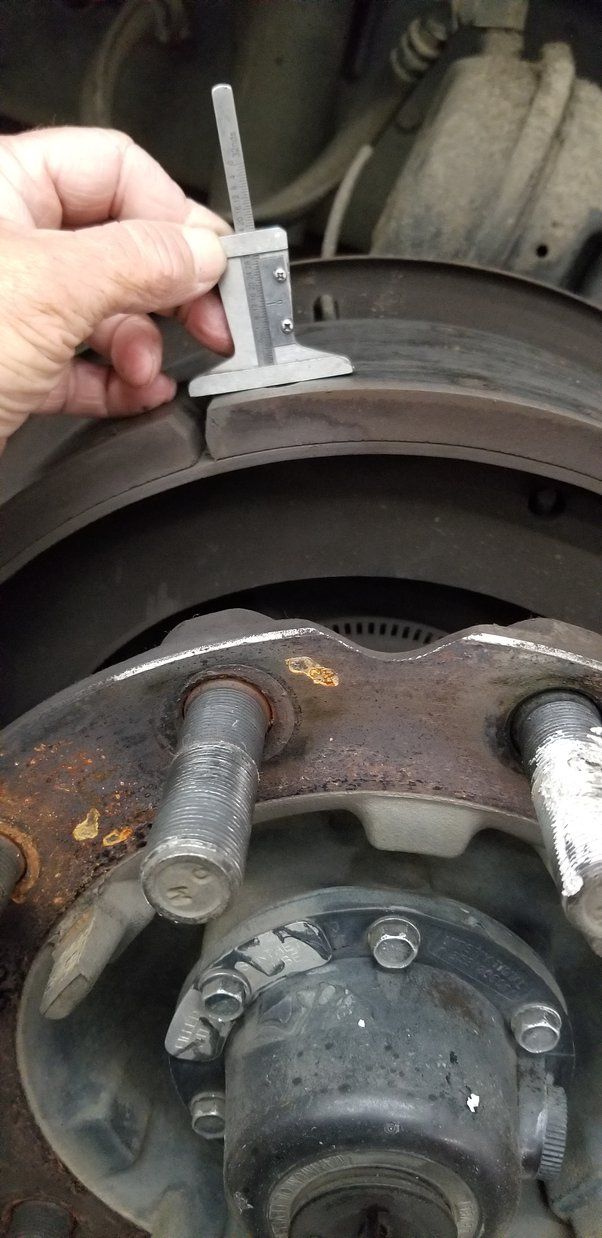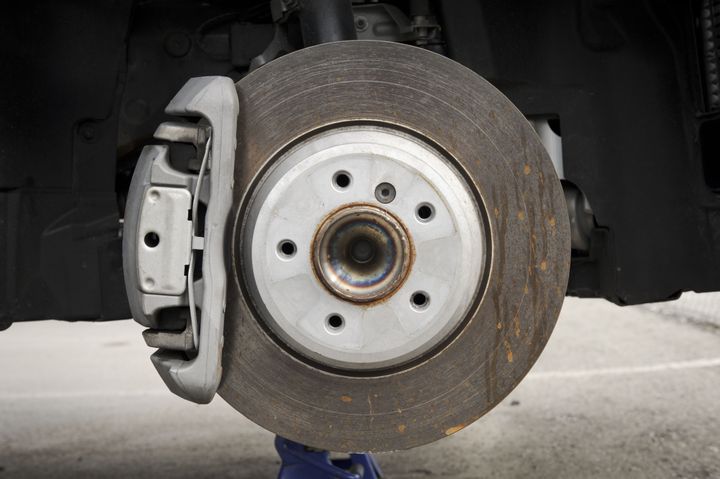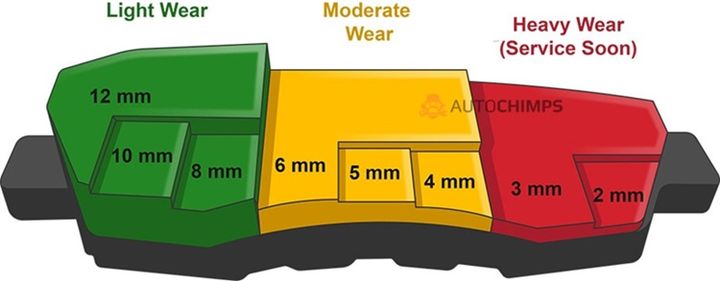


Brake shoes are a critical component of the braking system in vehicles equipped with drum brakes. They are responsible for creating friction against the rotating drum, which slows down and stops the vehicle. Over time, the friction material on the brake shoes wears down, reducing their effectiveness. Maintaining a minimum brake shoe thickness is crucial for ensuring proper braking performance and safety.

Before delving into the specifics of brake shoe thickness, it's essential to understand the braking system's role in ensuring your safety on the road. Brakes are responsible for slowing down or stopping your vehicle, and their proper functioning is paramount.
The braking system consists of several components, each playing a crucial role in the overall braking process. Here's a breakdown of the key components:
| Component | Function |
|---|---|
| Brake Pedal | Initiates the braking process when pressed by the driver. |
| Master Cylinder | Converts the mechanical force from the brake pedal into hydraulic pressure. |
| Brake Lines | Carry the hydraulic pressure from the master cylinder to the wheel cylinders or calipers. |
| Wheel Cylinders/Calipers | Apply the hydraulic pressure to the brake shoes or pads, creating friction. |
| Brake Shoes/Pads | The friction material that presses against the brake drums or rotors, slowing the vehicle. |
| Brake Drums/Rotors | The components that the brake shoes or pads press against to create friction. |
The brake shoes, in particular, are the components that create friction against the brake drums, converting your vehicle's kinetic energy into heat, ultimately bringing it to a halt.
Over time, brake shoes inevitably wear down due to normal usage. However, there are several factors that can accelerate this process:
Excessive Wear and Tear: The more you use your brakes, the faster the friction material on the brake shoes will wear down. This is especially true for city driving, where frequent braking is required.
Uneven Wear: If one of your brake components, such as a wheel cylinder or caliper, becomes stuck or seized, it can cause uneven wear on the brake shoes. This leads to one shoe wearing out faster than the other, compromising your braking performance.
Contamination: Grease, oil, or brake fluid can contaminate the brake lining, causing it to deteriorate rapidly. This is often the result of a leak or improper maintenance.
Overheating and Glazing: Excessive braking or towing heavy loads can cause the friction material to overheat and glaze, reducing its effectiveness and accelerating wear.
As a mechanic, I've developed a keen eye for spotting worn brake shoes. Here's how you can identify the issue:
Park your vehicle on a level surface and apply the parking brake.
Raise the vehicle and remove the wheels to access the brake drums.
Remove the brake drums to expose the brake shoes.
Inspect the brake shoe thickness using a micrometer or brake lining gauge.
| Sign | Description |
|---|---|
| Thickness Below Minimum | Brake shoe lining thickness below the manufacturer's specified minimum (typically 1/4 inch or 6.35 mm). |
| Visible Damage | Grooves, cracks, or uneven wear on the lining surface. |
| Brake Noise | Squealing, grinding, or rattling when applying brakes. |
| Reduced Braking Performance | Increased pedal travel or longer stopping distances. |
When it comes to replacing brake shoes, following the proper procedures is crucial for ensuring safe and reliable braking performance. Here's what you need to know:
Follow the vehicle manufacturer's instructions for proper removal and installation.
Clean the brake backing plate and other components thoroughly.
Replace brake shoes in axle sets (both wheels) for even braking.
Adjust the brake shoes to the specified clearance after installation.
Lubricate all moving parts with the recommended brake lubricant.
If the brake drums are within the manufacturer's specifications, you can use a brake lathe or drum brake machine to remove any grooves or hot spots, ensuring a smooth surface for the new brake shoes.
Inspect and replace other worn components like:
Wheel cylinders
Brake hardware
Drums (if necessary)
Use high-quality brake shoes designed for your vehicle make and model.
Avoid getting any lubricant or contamination on the new brake lining.

While brake shoe replacement is inevitable, there are steps you can take to prolong their lifespan and prevent recurring issues:
Follow the vehicle manufacturer's recommended brake inspection intervals.
Check brake lining thickness during every brake service.
Replace brake shoes when they approach the minimum thickness specification.
Avoid excessive brake usage or riding the brakes, which can cause overheating.
Adjust driving habits to reduce wear on brakes:
Coasting
Engine braking
Anticipating stops
Maintain correct tire pressure and wheel alignment to prevent uneven wear.
The cost of replacing brake shoes can vary depending on several factors:
| Factor | Description |
|---|---|
| Vehicle Make and Model | Brake shoe prices can differ based on the vehicle's specifications. |
| Part Quality | Higher-quality brake shoes tend to be more expensive but offer better performance and longevity. |
| Labor Costs | Professional automotive repair shops charge for labor in addition to parts. |
On average, you can expect to pay between $100 to $300 per axle for brake shoe replacement at a professional automotive repair shop. This cost typically includes the brake shoes, drums (if necessary), hardware, and labor.
If you're handy with tools and have the necessary equipment, doing it yourself can significantly reduce the cost, with brake shoes costing around $25 to $100 per axle, depending on the quality.
Maintaining the minimum brake shoe thickness is crucial for ensuring safe and reliable braking performance. By understanding the causes of wear, identifying the signs, and following proper repair procedures, you can prevent potential safety hazards and extend the lifespan of your braking system.
Remember, addressing brake issues promptly is essential, as worn-out brake shoes can lead to reduced braking performance, increased stopping distances, and potential accidents. Regular maintenance and timely replacements can help you avoid costly repairs and keep you and your loved ones safe on the road.
New brake shoes usually have a thickness between 10-12 mm (0.39-0.47 inches). This provides sufficient brake lining material for effective braking performance.
You can measure brake shoe thickness using a micrometer or dedicated brake lining gauge. Visually inspecting the brake shoes after removing the drum can also give you an estimate.
Uneven brake shoe wear can be caused by stuck or seized brake components like calipers or wheel cylinders, improper brake adjustment, or misaligned wheels.
It's recommended to replace brake shoes as an axle set (both wheels) to ensure even braking performance. Replacing just one shoe can lead to unbalanced braking.
Check brake shoe thickness during every brake service or at the manufacturer's recommended intervals, typically every 6 months or 6,000 miles.
Signs of contaminated brake shoes include rapid wear, reduced braking performance, and discoloration or glazing of the friction material.
If the brake drums are within the manufacturer's specifications for minimum thickness and runout, you can resurface them using a brake lathe or drum brake machine.
Use brake shoes specifically designed for your vehicle's make, model, and year. Consult your owner's manual or a professional mechanic for the correct brake shoe specifications.
With the right tools, instructions, and mechanical aptitude, you can install brake shoes yourself. However, if you're unsure, it's best to have a professional mechanic handle the job.
To extend brake shoe lifespan, avoid excessive braking, maintain proper tire pressure and wheel alignment, and follow the recommended maintenance schedule for brake inspections and adjustments.

Sarah isn't your average gearhead. With a double major in Mechanical Engineering and Automotive Technology, she dived straight into the world of car repair. After 15 years of turning wrenches at dealerships and independent shops, Sarah joined MICDOT to share her expertise and passion for making cars run like new. Her in-depth knowledge and knack for explaining complex issues in simple terms make her a valuable asset to our team.



